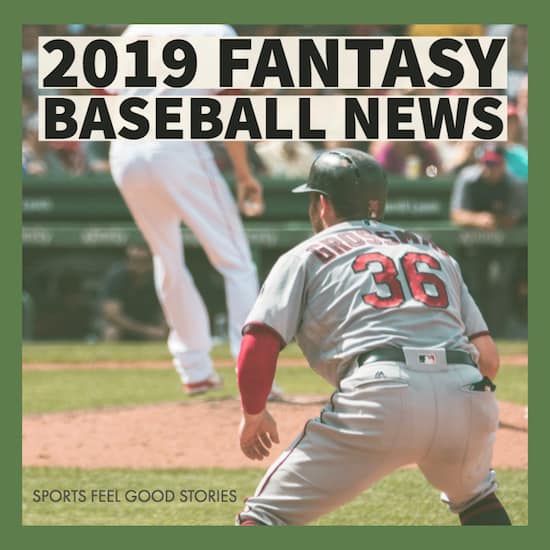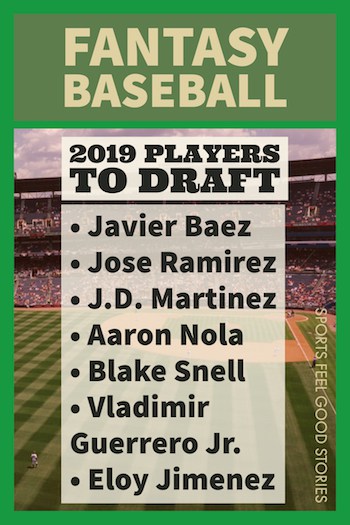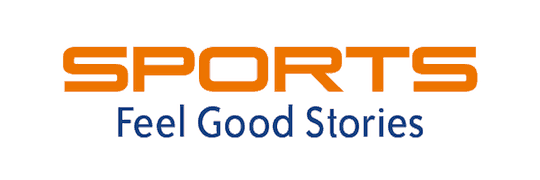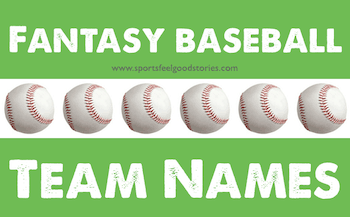Looking for some 2019 Fantasy Baseball news to relieve yourself from the winter doldrums?
A common February misconception is that winter is practically over with, and spring is right around the corner. As the recent polar vortex has harshly reminded us, warm skies for northern cities are still off in the distance.
During these times, people cope with the cold of winter in different ways. Either by vacationing or loading up on warm blankets and Netflix shows, it’s vital to have a reprieve from the frigid reality.
2019 Fantasy Baseball
Baseball fans all have one thing in common during the dog days of Winter, letting their mind drift to sunny spring training fields in Arizona or Florida with the crack of a baseball coming off a bat ringing in the background. Luckily, that magnificent image is now a reality, with Major League Baseball returning for its 148th season.
This article aims to inform players new to the fantasy of the primary ways it is played while also enhancing interest for the opening day of players poised for breakout years.
Similar to fantasy football, with several different leagues and scoring styles, fantasy baseball can be adjusted to the league’s preference. This reading will be focused on the generic league types and what best suits each level of player commitment.

Fantasy Baseball League Styles
Standard league sizes range from 8 players all the way up to 16. The main difference in styles is whether the league accrues counting stats throughout the whole season or goes by weekly head-to-head matchups.
The two main formats are Rotisserie (Roto) and Head-to-Head and can be played using categories or overall points. In general, year-long Roto and points leagues are more enjoyable for casual fantasy players, while Roto Head-to-Head better suits dedicated players.
See Shohei Ohtani fantasy baseball team names.
Rotisserie Scoring Format
Rotisserie is the most common way that fantasy baseball is played. In a standard rotisserie, teams are ranked from first to last in each statistical category, with half being for batters and half for pitchers.
| Batting Average | Runs Scored | RBIs | Home Runs | SB | Strikeouts | ERA | WHIP | Saves | Wins |
Points are then awarded based on the order in the player’s team resides in each, then totaled to give the overall league rank. The least amount of total points from each category is added up to determine the standings. Below is an example of player A’s team of points total for each category at the end of a season.
In this example, player A’s team hit the most home runs and had the most strikeouts but did poorly in other categories and was last in Saves.
| 9 | 7 | 6 | 1 | 8 | 1 | 9 | 4 | 10 | 5 |
The players’ total is 60, which would most likely finish middle of the pack at the end of the year. A balanced lineup is key in Roto leagues, as seen by how bombing one category can really set a team back.
Check out our Fantasy Baseball Rankings for 2019.
Rotisserie Head-to-Head Scoring Format
The majority of leagues use season totals for counting stats because it is less intense for the player to have to monitor each day during the 6 month season and can set a lineup and forget about it for chunks of time.
An alternative is to play roto on a head-to-head weekly basis. The categories are the same for this type, but each column that the player does better than their opponent in a single week is awarded 1 point.
A sweep of all categories would be 12 points, while a split would be 6 etc. This style brings out the friendly “rivalry games” that friends cherish. At the end of the year, the team with the most points wins the league.
This format has a lot more strategy, as picking certain players like base stealers or big hulking home run hitters can make the difference between winning and losing the week, depending on your opponent’s team strengths.
Check out “Getting to know Aaron Judge” page.
Points Scoring Format
A simplified league format based on points has steadily been gaining more followers. In a points league, a balanced lineup is not important, only possessing the best overall players. Hitters earn 1 point for each total base, run scored, stolen base, walk, and RBI. However, 1 point is subtracted for striking out.
Example: Mike Trout goes 2-3 with a single, double, walk, rbi, and one strikeout = 1+2+1+1-1= 4 points.
Pitchers are slightly more complicated and receive 1 point for each out made, with a bonus if it’s a strikeout. However, they lose 1 point for each walk and hit allowed, and 2 points for each earned run. Wins and saves are worth 5, while a loss is minus 5
High strikeout pitchers and elite closers provide the most pitching value in a point’s league.
Points Head-to-Head Format
The same rules as above, just that wins are each week instead of the season’s total. All formats have the option to have playoffs in September or run the regular season through the last game.

Fantasy Baseball Stars 2019
So now that you know which style fits best, who are you going to pick? The players listed established themselves last year and are primed to take the next step to superstardom. Here are your 2019 Fantasy Baseball News stars and rookie sleepers.
Javier Baez
Chicago Cubs SS / 2B / 3B 2018: 34 HR, 111RBI, 22 Stolen Bases.
No player exemplifies the word electric quite like Javy Baez does, serving as the Chicago Cubs jack of all trades. Playing throughout the infield, his defense somehow achieves a wow-inducing moment in almost every single game.
In addition, Baez may be baseball’s best baserunner and has used a patented swim move to make normal outs turn into breathtaking base thefts. Javy’s power-speed combination makes him a great building block to build a fantasy team around.
Javier Baez 2018 Highlights Video
Jose Ramirez
Cleveland Indians 3B 2018: 39 HR, 105 RBIs, 34 stolen bases.
Still somehow not yet a household name, Jose Ramirez, the Indians 26-year-old third baseman is one of the top players in major league baseball. His crazy numbers last season put him in elite company as only 39 players all-time have achieved a season of at least 30 home runs and 30 steals.
Even more impressive is he is just the third 3B ever to hit that threshold, which makes having Ramirez playing the hot corner for your fantasy team a major boost to winning the steals category.
J.D. Martinez
Boston Red Sox DH 2018: 43 HR, 130 RBI, .330 batting average.
The Red Sox’s big free agent signing could not have been more of a home run hit last year, leading them to a World Series victory. It’s safe to assume all 29 other teams regret not making a better offer for Martinez’s power bat. His 130 RBIs led baseball, and with a deep and talented Red Sox lineup, similar numbers are definitely within reason.
While not a threat on the base paths, feel confident locking up every other offensive category with this low-risk fantasy star.
J.D. Martinez Highlight Video
Aaron Nola
Philadelphia Phillies SP 2018: 212 IP, 224 strikeouts. 2.37 ERA .0975 WHIP.
Nola’s 2018 season established itself as one of the finest in Phillies history, with a 2.37 ERA over 212 innings. Finishing third in the National League Cy Young voting, hopes are high that the 26-year-old can achieve even greater heights.
The organization has maximized the chances of that occurring by trading for elite catch J.T. Realmuto from the Miami Marlins. With the established catcher at his side, look for Nola to lead a Phillies team primed to compete for the NL East division crown.
Blake Snell
Tampa Bay Rays SP 2018L 180 IP, 221 strikeouts 1.89 ERA, .974 WHIP.
Snell was a player that always had potential but was never thought of as that ace-level pure stuff. 2018 saw that narrative tossed aside emphatically as Snell narrowly edged out Justin Verlander to win the AL Cy Young award.
Opposing batters stood no chance as he threw a career-high 180 innings of minimal hits allowed with a superb strikeout rate. As still a relative unknown, it’s possible to snag Snell in the mid-rounds but be worrying about selecting too high as there is always a concern for pitchers on the year after throwing a career-high in innings.
Note: Any suggestions for our 2019 Fantasy Baseball News update? Please let us know via the contact page. Thanks.
Top Impact Rookies
Looking for some rookie sleepers? Well, you might not call these two sleepers, but they’re definitely great candidates for your team.
Vladimir Guerrero Jr.
Toronto Blue Jays 3B.
Judging from scout evaluations, Vlad Jr. has the toolset to become a hall-of-fame player potentially. And that’s just the scouting reports; nothing to do with him also being the son of 2018 Hall of Fame inductee Vladimir Guerrero.
Junior received the first-ever perfect 80 scores for hit tool by MLB Pipeline. The incredible hand-eye coordination of that mark, combined with his amazing raw power and solid speed, will make him a star in Toronto and, hopefully, for your fantasy team as well.
Eloy Jimenez
Chicago White Sox LF.
Southside fans have been waiting for Eloy Jimenez to be patrolling the outfield since the day he was acquired from the team just a few miles up north in the Jose Quintana Cubs trade. Fast forward a year and a half, and indications are the White Sox may have won a major trade victory.
Quintana has been average for the Cubs, while Eloy has risen to be the top power bat in the minors and will be slugging in a very hitter-friendly ballpark for years to come.
The American League rookie of the year race should be fantastic entertainment as Eloy and Vlad Jr. battle it out for a top spot on two teams searching for a new face of the franchise.
— Nik Ebert
Nik is a lifelong Chicago resident and loves all things sports, but Fantasy Baseball is his favorite fantasy sport to follow. He can often be found rambling on about random stats and stories to any ears that will listen when he is not writing about fantasy football.
Etcetera
You’re on the 2019 Fantasy Baseball News update page.
You might like:


